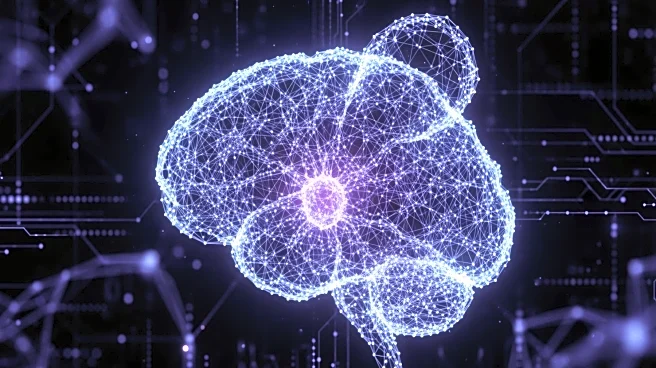What's Happening?
Researchers have successfully created one of the largest and most detailed biophysically realistic brain simulations of an animal using the supercomputer Fugaku. This virtual copy of a whole mouse cortex
includes nearly ten million neurons and 26 billion synapses, simulating both form and function across 86 interconnected brain regions. The project, led by Anton Arkhipov, PhD, at the Allen Institute, demonstrates the potential for larger models with precision and scale. The simulation aims to study brain diseases like Alzheimer's and epilepsy, offering insights into neural network damage and cognition. The work is under review and will be published in coordination with the SC25 supercomputing conference.
Why It's Important?
This development marks a significant advancement in neuroscience and computational science, showcasing the power of supercomputers in simulating complex biological systems. The ability to simulate a mouse cortex opens new avenues for understanding brain function and disease progression, potentially leading to breakthroughs in medical research and treatment strategies. The collaboration between human neuroscience expertise and Fugaku's computational power highlights the importance of interdisciplinary approaches in tackling complex scientific challenges. This milestone also sets the stage for future simulations of larger and more complex brain models, including human brains.
What's Next?
The research team plans to expand their simulations to encompass entire brain models, eventually aiming to simulate human brains with biophysical accuracy. This goal involves integrating more biological details uncovered by the Allen Institute, moving from single brain area models to full-brain simulations. The ongoing development of these models could revolutionize neuroscience, providing deeper insights into brain function and disorders. The upcoming publication and presentation at the SC25 conference will likely attract attention from the scientific community, potentially leading to further collaborations and advancements in brain simulation technology.
Beyond the Headlines
The ethical implications of simulating brain function at such a detailed level are significant. As researchers move towards simulating human brains, questions about consciousness, identity, and the nature of thought may arise. Additionally, the use of supercomputers for such simulations raises concerns about energy consumption and environmental impact, prompting discussions on sustainable computing practices. The integration of AI in these simulations also highlights the evolving role of machine learning in scientific discovery, potentially transforming how researchers approach complex problems across various fields.











